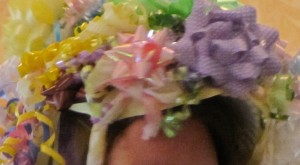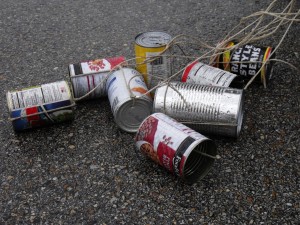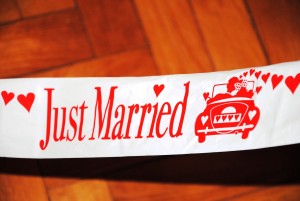The Origin of Popular Wedding Traditions: Why Do We Do These Things to Brides?
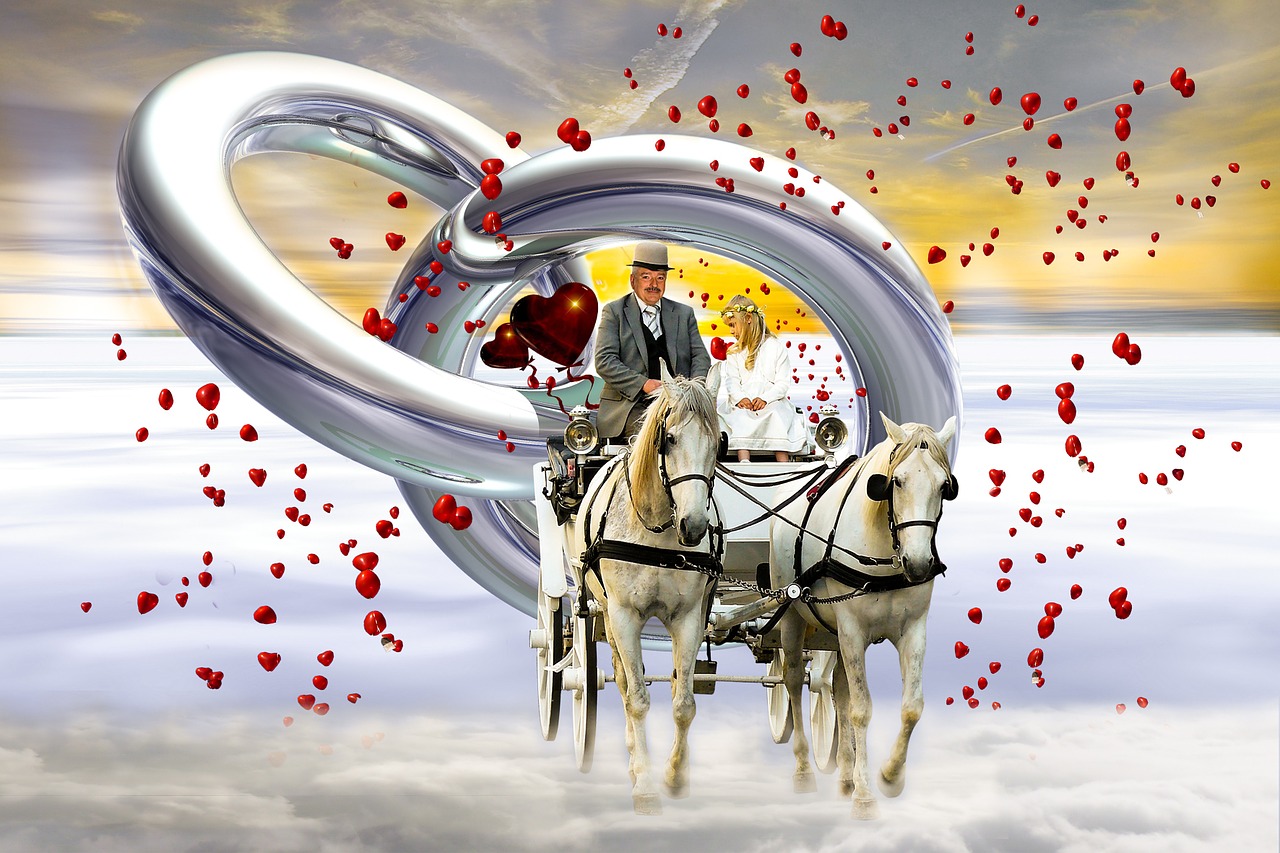
My kids and their cousins are reaching the age where we are once again seeing a flurry of engagement announcements and all the excitement wedding planning brings. A common tradition, the bridal shower, has been updated to match the times, but there are some other rather strange traditions that have held on. Some of these have rather amusing origins.
Legend has it that the first bridal shower was in 19th century Holland, where a wealthy girl fell in love with a poor miller. Her father did not approve of the relationship and refused to provide a dowry, so the townspeople got together and showered the couple with gifts necessary to start a new household, thus starting a tradition that would spread throughout the world.
A common bridal shower photograph is that of the bride-to-be, with a bizarre hat made of ribbons and lace, precariously perched on her head. I have found that many young women are unaware that they will be receiving such a gift and these photos are often awkward, as they desperately try to keep it from falling off (or perhaps to avoid wearing it in the first place). It is created as the guest of honor opens gifts, from the ribbons and bows guests have used as decoration when wrapping. They are attached to a paper plate to form a hat, which will later be used as the practice bouquet for the wedding rehearsal (a trusted bridesmaid is often enlisted to create this masterpiece and also may be required to safekeep it and make sure it makes it to the rehearsal).
 The ribbons used to make up the hat need to be removed carefully. Scissors/knives should not be used to cut ribbons off gifts. Each ribbon the breaks symbolizes a child that the couple will have. Many an eager grandma-to-be has neglected to tell her daughter this until after all the gifts have been opened.
The ribbons used to make up the hat need to be removed carefully. Scissors/knives should not be used to cut ribbons off gifts. Each ribbon the breaks symbolizes a child that the couple will have. Many an eager grandma-to-be has neglected to tell her daughter this until after all the gifts have been opened.
There are surprisingly, also traditions surrounding the order in which the gifts are opened. The first gift unwrapped should be the first used in the couple’s home. This is seen as a way to ensure good luck for the marriage.
(It is also believed that the gifts should not be used until after the wedding, again to ensure good luck.) Another tradition affects not the bride, but one of the guests. The giver of the third gift opened is said to be the next women to have a baby.
An old tradition holds that it is bad luck to give knives as a gift; that a blade can represent severing the relationship. Since quality knives are pricey and are appreciated as gifts, this bad luck can be combated by adding a penny with the gift, enabling the bride to “buy” the gift from the giver.
Perhaps the most fun tradition for this party is that of recording the bride’s comments as she opens her gifts. Everything the bride says as she opens her gifts will be repeated on the wedding night.Reading the comments back is certain to cause laughter for the guests (and perhaps some blushing for the bride-to-be).
Wedding traditions are just as strange
Also interesting are the commonly practiced wedding traditions that we just accept as part of the celebration. Many of these go back centuries. The origins of some are actually much more practical than one might think.
For example, the bridal bouquet was carried to make the bride smell better. Up until modern times, baths were an infrequent occurrence; the popularity of June and September weddings coincides with semi-annual baths.
The tradition of a white wedding dress started with England’s Queen Victoria who was criticized for her fashion faux pas. From Biblical times, blue was the color that symbolized purity and was the common color for a bride; grooms wore a band of blue on their attire as well. Vicki turned things on end and her style has held on.
We no longer fear evil spirits, but still hold traditions to prevent them. According to the ancient Greeks and Romans, a veil protected a bride from any evil spirits. After the wedding, the groom carried the bride across the threshold to protect her from any spirits lurking below. And, the tradition of honking horns as the new couple drives off goes back to the days of open carriages where bells and firecrackers were intended to scare off evil spirits and thus protect the bride.
Many a bride has upheld a popular tradition without question, despite being perplexed when faced with what to choose for her “Something old, something, new, something borrowed and something blue.” Something old represents continuity with the past, something new represents good fortune and future success. Something borrowed reminds the bride that she has family and friends who will help her when needed and something blue is a symbol of purity, fidelity and love. Finally, putting a sixpence in her shoe (as the rhyme finishes) is a way to wish wealth for the bride.
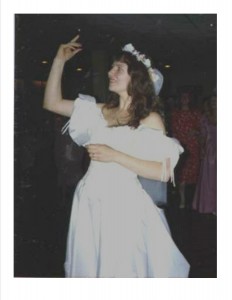 Throwing the bridal bouquet was originally used as a survival technique. Since newly-married couples were considered lucky, wedding guests would mob the couple, reaching out to try to grab some of the luck for themselves. Brides would throw their bouquet to appease these guests and to try to escape for the honeymoon unscathed. The history of tossing the bride’s garter is even more intrusive. It goes back to the ancient custom of having witnesses at the marriage bed to ensure the marriage was consummated. The garter was seen as evidence that the marriage was complete. As these customs died off, and couples got more privacy, the bride had the groom throw it to the crowd, thus proving the consummation.
Throwing the bridal bouquet was originally used as a survival technique. Since newly-married couples were considered lucky, wedding guests would mob the couple, reaching out to try to grab some of the luck for themselves. Brides would throw their bouquet to appease these guests and to try to escape for the honeymoon unscathed. The history of tossing the bride’s garter is even more intrusive. It goes back to the ancient custom of having witnesses at the marriage bed to ensure the marriage was consummated. The garter was seen as evidence that the marriage was complete. As these customs died off, and couples got more privacy, the bride had the groom throw it to the crowd, thus proving the consummation.
Wedding rings are worn on the ring (or fourth) finger of the left hand due to the belief that a vein led from there directly to the heart. At one time, men wrapped rings around their new wives wrists to “bind” them. This changed over time to only a finger, as did the material used, from twine to the now common metal rings.
It is common to decorate the car of the new couple with a “Just Married” sign and streamers, etc. In earlier times, shoes were tied to the car. This tradition goes back to the day when women were truly “given” by their fathers. The shoes were taken from the bride, showing that she could not run away, as she was now the possession of her new husband. They were fastened to the car as a public declaration of that fact.
Finally, the honeymoon period is so named because of the importance of producing an heir. The original honeymoon was a month (or one moon) long, during which time, the couple would liberally drink mead, or honey wine, thought to increase the odds of conceiving a son.
Though times have greatly changed, many of these traditions have lasted. It is interesting to note that traditions have a way of taking hold, even when we don’t know (or agree with) the whys behind them.
